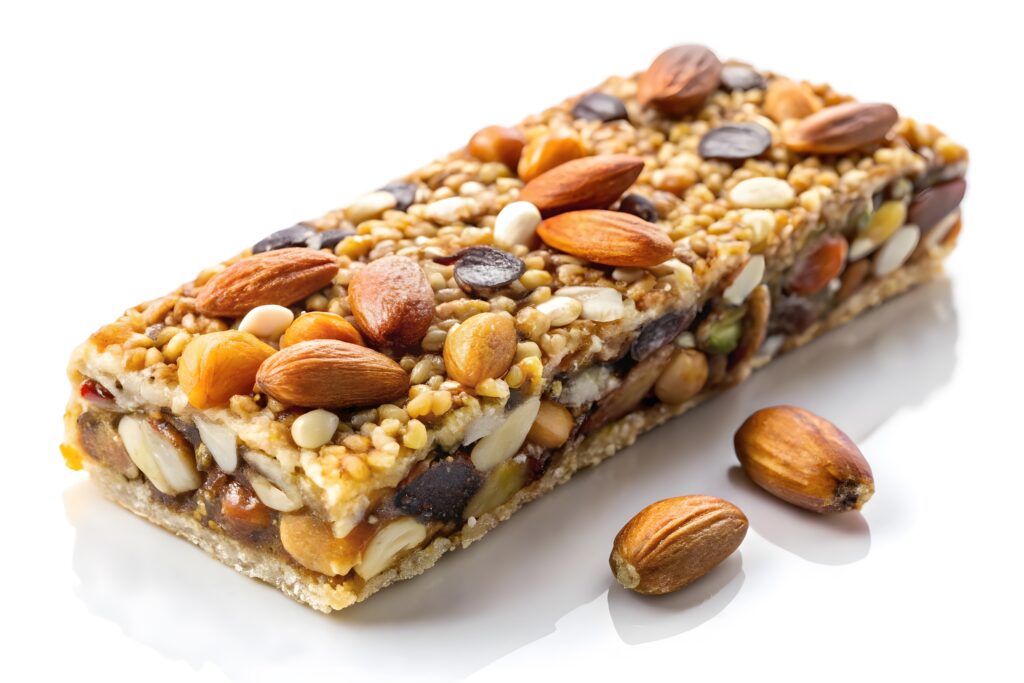The art of dosing in food
Every ingredient requires a unique approach

In the food industry, everything revolves around precision and quality. Whether it’s flour, sugar, nuts, dried fruits or spices — each ingredient has its own unique characteristics. And those properties determine the best way to dose them. A mismatch between product and dosing technology can lead to issues: clogging, product damage, or inconsistent mixing. Selecting the right dosing solution tailored to the properties of each ingredient is a true art.
Why is dosing in food so challenging?
This is mainly due to the wide variety of ingredients used in food production. And those ingredients vary greatly in their behavior. Here are a few typical examples:
- Powders such as flour or cocoa powder have poor flow properties, can be sticky, and tend to form lumps, making them difficult to dose evenly. They need mechanical assistance to keep moving.
- Dried fruits such as raisins or cranberries are sticky and fragile. If damaged, they can lose structure or moisture content.
- Nuts and breakfast cereals are brittle and need to be handled gently to prevent breakage and dust formation.
- Some fibers or herbs can entangle or clump together, which disrupts a continuous and even flow.
The right solution for each ingredient
To tackle these challenges, several dosing technologies are available:
- For poorly flowing powders that tend to bridge or clump, special screw feeders with integrated agitators are used. These agitators keep the material in motion, prevent bridging, and ensure consistent feed into the screw. The choice between spiral, blade or double concave screws depends on particle size and cohesiveness.
- For sticky and fragile ingredients such as dried fruit or muesli, gentle product handling is key. Flexible hoppers such as FlexWall® feeders with massage paddles move the hopper wall from the outside, loosening the material without damaging it. This prevents blockages and ensures a steady product flow.
- Fragile products such as nuts or cornflakes are best dosed using systems that do not squeeze or shake the product. Vibratory feeders or belt weighers transport these gently, preserving their shape and quality.
Hygiene: a basic requirement in food applications
Besides accurate dosing, hygiene is critical. All product-contact parts must be easy and thorough to clean. This means: smooth stainless steel surfaces (Ra < 0.8 µm or better), fully welded seams, no hidden corners or cavities where residue can accumulate, and easy-to-disassemble components. Food-safe polyurethane parts are typically colored blue for better visual detection in hygienic environments.
Flexibility: essential in today’s market
A modern dosing system must be flexible. The food industry is changing rapidly with new recipes, ingredients and consumer demands. Advanced controls allow precise logging of dosing values per batch — vital for traceability and quality assurance. A well-designed dosing system can easily be adjusted for different ingredients and quantities, allowing the process to adapt quickly to changing production needs.
Trouble-free dosing starts with product knowledge
The success of any dosing process begins with understanding the behavior of the product. Once you know how an ingredient flows, sticks, breaks or retains moisture, you can determine which dosing technology is best suited for the job. Not every system works for every ingredient. Choosing the wrong technology can lead to blockages, product damage, or inconsistent results.
That’s why it pays off to define your product requirements early in the process — not only for new installations, but also when upgrading or replacing existing lines. A well-informed decision can improve efficiency, reduce downtime and boost product quality.
We’re happy to share our expertise
Are you working with challenging ingredients or looking to optimize your dosing process? SPS | Solids Process Solutions is here to help. Together with our partner Kubota Brabender Technologie, we offer high-quality dosing systems specifically designed for food applications. From hygienic design to smart control systems — we support you in every step from engineering to implementation.
Hygienic design according to Brabender Technologie:
- All product-contact parts made of FDA and EC 1935/2004-compliant materials
- Food-grade polyurethane components are blue for high visual detectability
- Fully welded, smooth seams — no dead spaces or crevices
- Surfaces finished to Ra < 0.8 µm
- Rounded edges and corners for optimal cleanability
- No exposed threads in the product zone
- Fanless, smooth-surface motors without cooling fins (easy to clean)
- Quick-release clamps for covers and hoppers for fast disassembly
Want to know more or discuss your dosing challenge?
Get in touch with our team.
A WIDE RANGE OF SOLUTIONS
SPS | Solid Process Solutions offers a wide range of equipment for dosing, extruding, granulating, and inspecting. Depending on your specific needs, we will find the right and cost-effective solution.



